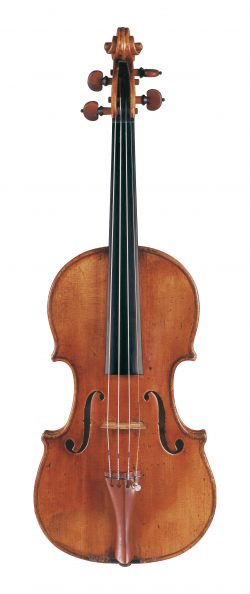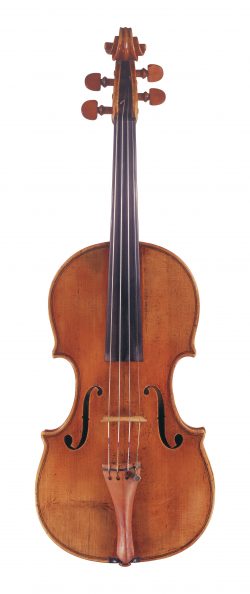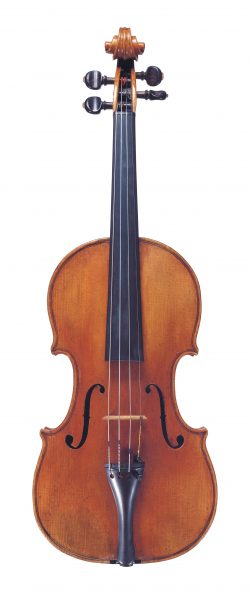Giovanni Battista Guadagnini
Giovanni Battista Guadagnini, or ‘J.B.’ as he is more commonly known, worked over a period of forty-four years in five different towns and is considered the greatest violin maker of the mid- to late-18th century. On his early labels he claims to have been a pupil of his father, Lorenzo, but there is scant evidence to suggest that Lorenzo was a violin maker. Records show that Lorenzo was an innkeeper, but, interestingly, Gaspare Lorenzini also claimed to be his pupil. Whatever Giovanni Battista’s training, his highly individual style produced results of the highest quality, and his instruments are highly regarded by soloists and chamber musicians.
Guadagnini’s earliest instruments date from around 1740, when he and his father were both resident in Piacenza. These earlier instruments are characterised by pretty wood, often slab-cut, and beautiful red-orange varnish. The cello model that he developed during this period is about 4cm shorter than Stradivari’s Forma B, but the increased width and depth makes his cellos very successful (see the 1744 cello). This model was almost certainly developed with the help of the cellist Carlo Ferrari, whose movements were closely followed by Guadagnini over the next few years.
In 1749 Guadagnini followed Ferrari to Milan, where his violins took on a striking appearance, with excellent quality wood (see the 1751 violin) and a translucent red varnish. His characteristic pear-shaped bottom drops are particularly noticeable on the 1757 violin. There is some doubt as to whether Guadagnini actually lived in Cremona in 1758, but there are a dozen or so violins in existence that bear a label suggesting that they were made in that town. These few instruments show a strong resemblance to Guadagnini’s Milanese violins, but the varnish is usually of a softer, golden-orange colour. The ‘Briggs’ violin of 1758, is one of the most celebrated of Guadagnini’s Cremonese violins.
With his move to Parma in 1758/9, Guadagnini was again following in the footsteps of Ferrari, who was in the employ of the Duke of Bourbon. This is most probably the explanation for the monogram CSR (‘Celsitude Serenisima Realis’: ‘His Serene Royal Highness’) that appears on Guadagnini’s labels in this period. The quality of the wood and varnish is generally less impressive than in his Milanese period.
Guadagnini moved to Turin in 1771, and we illustrate three violins from 1772 that demonstrate his growing preference for slab-cut maple for the backs, and his gradual tendency to place the treble f-hole a little higher than the bass, in the manner of Stradivari’s late work. In 1773 Guadagnini met Count Cozio di Salabue, who became his patron, and for four years Guadagnini worked exclusively for the great connoisseur and collector. It was during this period that Cozio acquired the ‘leftovers’ of the Stradivari shop from Paolo Stradivari. Thus Guadagnini became acquainted with the work of the great master, and this had a significant impact on his working style. He adopted Stradivari’s model and f-holes and his varnish began once again to take on the red hue that he had used to such great effect in Milan. The circa 1780 violin shows not only the influence of Stradivari, but the roughness of Guadagnini’s late work. From 1775 onwards we also see the insertion of the words Alumnus Antonii Stradivarii on his labels. This was not intended to suggest any actual working relationship, but was meant rather as a mark of respect for the great master.



























